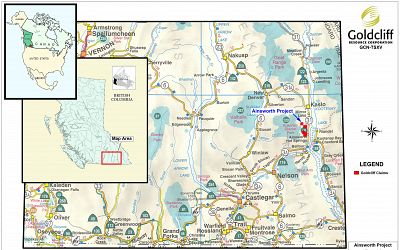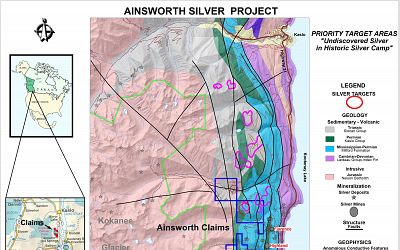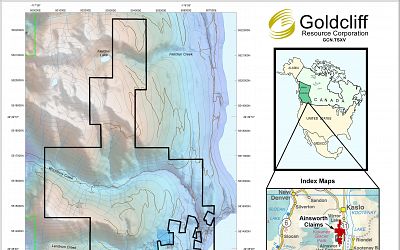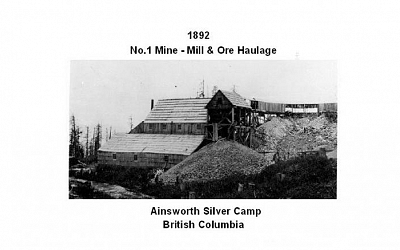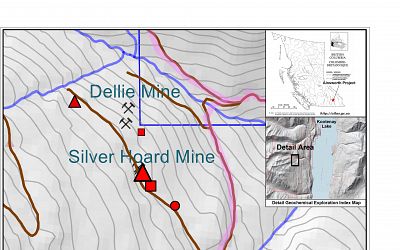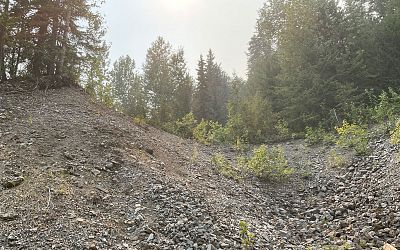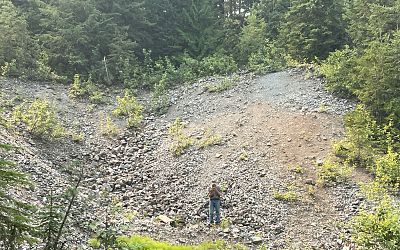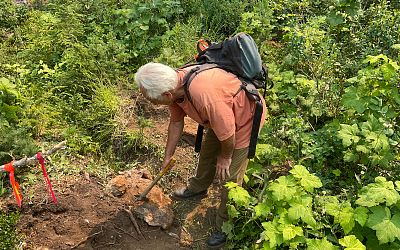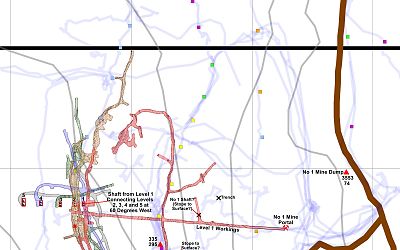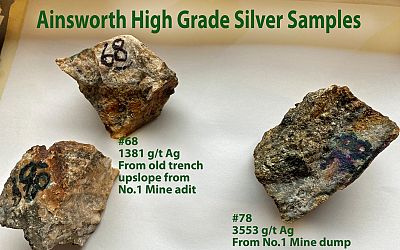Overview
AINSWORTH SILVER PROJECT
Goldcliff's Ainsworth Silver property is located in the Ainsworth Silver Camp, Kootenay Mining District, Slocan Mining Division, British Columbia, Canada. The property is 100-per cent owned by Goldcliff and consists of three claim blocks covering 1,772 hectares.
Background
The Kootenay Mining District and area have historic silver production totalling 99.6 million ounces. The Kootenay Mining District is situated in the central part of the Kootenay Arc, a curving belt of complexly deformed Paleozoic rocks. The Coeur d'Alene silver district, Idaho, USA is situated in the southern part of the Kootenay Arc with a similar geological setting. The historic silver production there is 1.2 billion ounces with ongoing silver production.
Ainsworth Silver Camp
The first recorded silver-lead-zinc production in the Ainsworth camp was in 1889. The Ainsworth camp total historic silver production is 4,373,431 ounces of silver, 94,948,494 pounds of lead, and 16,732,265 pounds of zinc from 763,828 tons of ore to the end of 1964. The camp had over 50 mines.
The No.1 Mine was the highest grade silver producer and produced 1,993,818 ounces of silver at a grade of 49.64 ounces per ton (1,707.78 grams per metric tonnes), with much of this silver ore occurring as native wire-silver. From 1889 to1964, the No.1 Mine production contributed 45 per cent of the silver in the camp. The No.1 Mine is within the area claimed by Goldcliff.
Geology
The geology of the Ainsworth silver camp consists of complexly deformed Paleozoic rocks of the Kootenay Arc. These older rocks have been intruded by Mesozoic and Cenozoic intrusive rocks. The older rocks range in age from Lower Cambrian to Upper Triassic. The older rocks are mica schists, limestones, homblende schists, quartzites and slates of the Lardeau, Milford, and Kaslo Formations, and the Slocan Group. The older rocks are metamorphosed, foliated and faulted in a north-south direction. The silver mineralization occurs in both older and younger rocks. The majority of the silver ore deposits occur in the older rocks. The younger intrusive rocks have silver ore deposits in the Nelson batholith. The silver mineralization in the area is related to Cretaceous Fry Creek and/or Eocene Coryell Intrusions.
Deposits
The silver deposits occur in veins, vein-shear zones and mantos, and are characterized as massive, breccia, disseminated and discordant. The deposits-shapes are fractured, sheared, tabular and bedded.
The silver ore mineralization is associated with pyrite, galena, sphalerite, chalcopyrite, pyrrhotite and arsenopyrite. At the No.1 Mine, the silver ore was native wire-silver. The gangue minerals are quartz, calcite, siderite, fluorite and manganiferous iron.
2020 Sampling
A brief geochemical sampling programme was conducted during the first week of October 2020. A total of 38 rock samples, 36 soil samples and 18 Lithic Drainage Samples (LDS) were collected from areas around the old No. 1 mine and Silver Hoard workings, and in the area between the two operations.
Twelve of 38 rock samples returned values in excess of 1 g/t Ag. At Silver Hoard, a black manganiferous breccia outcrop sample yielded 359 g/t Ag. Upslope and west of the No. 1 mine adit, a partially buried sample of rusty bedrock/sub-crop returned 355 g/t Ag and 4.73% Zn. Sixteen of 18 LDS samples returned values in excess of 1 g/t Ag. Two LDS samples taken below the No. 1 mine adit and below the mine dump yielded 825 g/t Ag and 498 g/t Ag respectively, with both samples displaying highly anomalous base metal values. A soil sampling line was run between the two old workings, with samples taken at 50 metre intervals. Twenty-four of 36 soil samples returned values in excess of 1 g/t Ag. A sample taken below the No. 1 mine returned 251 g/t Ag.

